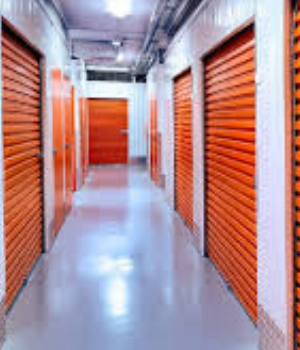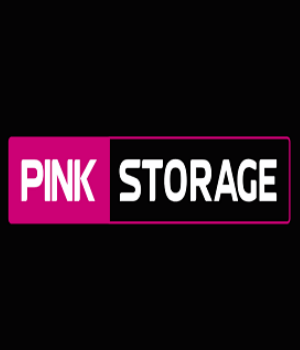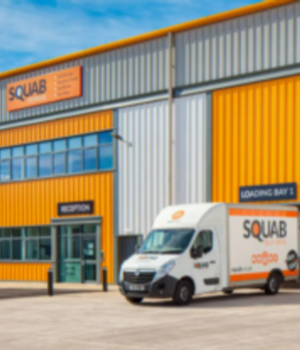Discover the key questions every operator should ask vendors when choosing self-storage management software, and why.
Whether you’re starting out or looking to modernize, choosing the wrong software to run your self-storage business can be an incredibly costly mistake. The difference between the right and wrong decision is the difference between an efficient business set for success and one that is expensive to run, slow to adapt, and likely to struggle.
Before making a decision, it is vitally important to understand the difference between modern solutions and older products on the market.

When operators start looking for self-storage software, they usually begin by looking for something that helps them manage their facility. Things like allocating units, tracking availability, and even generating customer invoices. Anything that helps manage the facility and the day-to-day tasks associated with running it. Almost all the existing self-storage software products, many of which have been around for over 20 years, do this.
But the world has changed since then. Self storage software is no longer about just tracking unit availability and creating invoices. It should reach right across your entire business, helping you market, sell, maximize revenue and reduce effort.
How to pick the right self storage software?
Here are eight key questions you should ask vendors when choosing self storage management software, and why they matter. They’ll help you compare solutions more knowledgeably and ensure that you pick a modern solution that can help you build and run an efficient business, grow, and meet the challenges of the future.
- How does it help me find customers?
- How does it help me sell to customers?
- How does it help me automate my business?
- How can it help me automatically grow sales over time?
- Does it help me minimize risks to the business?
- Is the product developing with the future in mind?
- How many versions of your product are you building and maintaining?
- Can I try before I buy?

How does it help me find customers?
Traditional software will struggle to answer this question. Traditional vendors expect you to have a standalone website—one built using a basic consumer tool like WordPress or Wix—and once your site has done the work to generate a lead, that’s when their management solution becomes relevant to track and progress the sale.
However, while using these DIY website builders can be great for hobbies and pet projects, for a business they aren’t always the bargain they seem:
Firstly, they need to appeal to a vast range of users, so template designs, layouts and functionality are generic, rather than created specifically for the needs of a self storage business. They’re also often limited in features.
Customizing templates to get your site to do what your business needs it to will almost always require upfront and repeated help from specialists (in other words: upfront costs and ongoing costs!).
And when you don’t have expertise in web design and performance and have a go without professional help, it’s surprisingly easy to accidentally make choices and additions that will make your website incredibly slow (which hurts your site’s search ranking) or screws up the user experience (UX) (which affects conversions). Not only that, building a site this way will take you longer than you think and likely end up costing you more than you expect (up-front as well as the ongoing cost and effort of keeping it working as browsers and operating systems are updated, integrations unexpectedly disconnect, etc).
Want to include ecommerce capabilities too? That’ll triple the complexity you have to manage.
Modern software understands that in today’s market, it’s no longer good enough to create software that just manages the facility. With most self storage customers now beginning their search for your product online, the right software will play a crucial role in customers finding you in the first place.

A modern piece of self storage management software will come with a super-fast loading website that Google will a) love and, b) in return, show your website higher up the results. This means you get customers to your site before they end up on a competitor’s site, which means more lead generation than your competitors, more sales, more profits, and a more successful business.
It will be mapped out specifically to prioritize the key content self storage customers need to see in order to make a purchase decision. And it will be optimized for turning visitors into customers. In short, all of the specialist web performance, UX, and functionality will be already baked in—strategically designed for the needs of self storage operators and customers—so all you need to do is add text and images.

How does it help me sell to customers?
Traditional software will answer this with a big emphasis on its Customer Relationship Management (CRM) system. A CRM system is designed to help teams efficiently follow up on leads by letting them assign a salesperson, add notes to a lead, set alerts and reminders, etc. And this feature remains an important part of these older solutions because their clients are still carrying out sales manually.
Modern software knows there’s no better way to convert a website lead into a customer than making it really easy for them to book and pay online right there and then. So it will offer self-service customer experiences by default, where visitors can book storage and add their recurring digital payment method themselves (credit card, direct debit, etc). If these sales experiences are professionally designed and optimized, the conversion rate from website visitor to paying customer should be high. If your vendor offers an integrated website process, you should ask for data showing their conversion rates. (For example, operators using Stora’s self storage software average over 3% conversion compared to an industry average lead conversion rate of just 1.5%.)
BUYER BEWARE!
Watch out for online booking and payment flows that ignore best practices for online conversions. Erecting barriers before you get the customer past the first big conversion event—entering payment details—will decimate conversion rates and lead to lower sales and higher staff costs. For example, a booking flow that asks customers to upload ID and sign contracts before adding payment details will kill conversions.
As the occasional visitor may have questions, a modern platform will also include live chat (either built in or via integration) so you can answer questions in real time from your phone while that lead is still on your website and in the buying mindset. And while a modern solution will include CRM features, these will be heavily automated so the software is doing the heavy lifting (eg, customer emails and texts, staff reminders).
How does it help me automate my business?
Traditional software will offer basic automations to reduce administrative effort around a few repetitive tasks. These are mainly as follows, and if the self storage software you’re investigating doesn’t do these things, you should immediately look elsewhere:
the creation and sending of invoices to customers;
connecting to a payment processor to process payments on your behalf; and
connecting to smart entry systems that allow your customers to get codes for their unit’s door.
However, be sure to probe with your salesperson whether these tasks are truly automatic, or whether they require initiation first. In older software, often you must log in and click buttons in order to kick off ‘automated’ processes, and you may need to do this multiple times each day depending on the platform, the size of your facility, and the volume of sales and billing activity you’re generating. This can be a surprising time drain on your staff and adds delays for your customers.
Modern software will automate all of the above plus much more, but in a truly hands-free way. Here are some of the most impactful time-savers you should expect to see in a state-of-the-art solution:
PAYMENT COLLECTION
It will automate the collection of payments using pull payment methods (as opposed to leaving it to customers to send money to you manually each time).
RECONCILIATIONS
It will automatically reconcile the payment against the invoice.
MISSED PAYMENTS
When a payment fails, it will automatically retry the payment repeatedly over a set period (for example, eight times over two weeks) so you almost never need to get involved in chasing missed payments. It can also automatically collect and update expired customer card details so missed payments don’t happen in the first place. Combined, these two features can dramatically reduce the debtors in your client base. (For example, the average operator using Stora’s self storage software has up to 6x fewer debtors than the industry average—resulting in a 2%–3% sales boost.)
DATA ENTRY
It will connect the website’s bookings and payments system directly to the management software so that customer contact and payment details are automatically synced and staff don’t have to manually re-enter them.
UNIT ALLOCATION
It will let you set rules that control how the software automatically allocates units, opening up the possibility of customers booking, paying, passing ID checks, signing a contract, and moving in without any effort from you or any of your staff.
At Stora, we plan to release a feature that lets your customers get from your front gate to move in within 90 seconds. Traditional self storage software can’t even dream of innovating like this, because they only solve a very narrow piece of the end-to-end process.
ACCOUNTING AUTOMATION
It will automate your accounting by running reconciliations and creating the necessary accounting entries for you (rather than you spending hours each week manually copying invoices into your accounting platform). As a benchmark, operators using Stora finish their accounting in less than 30 minutes/month.
SMART PRICING
It can automatically raise or lower your prices based on remaining availability in your facility or in line with supply and demand in your area.
SALES FOLLOW-UPS
It can automate reminders and sweeteners to leads who haven’t completed their booking yet.
MOVE OUT MANAGEMENT
It can automated the move-out process, including notifying you when the unit has been left empty and cleaned.
It’s true that some of the older software products can work alongside third-party web booking systems. But, these are separate products that aren’t integrated, and they vary hugely in quality. While using these solutions side by side can solve some issues and make it easier to transact online, the experience, flexibility and power of these combos can never match a software product where the website, ecommerce, facility management, and pricing have been designed together from the ground up.
How can it help me automatically grow sales over time?
Traditional software doesn’t typically get involved in the direct to customer sales process and, though some facilitate passing price increases on to existing customers, these processes tend to be very time consuming and require you to deal with customer contacts.
More importantly, traditional self storage software charges on a per-unit basis. This sounds appealing on the surface—predictable costs. But look closer and the picture is a lot less rosy. It means they have no incentive to help you grow sales, as they’ll get paid regardless of what happens to your sales—even if your units are sitting empty.
Modern software will be much more focused on helping you grow sales over time, and this will be obvious from their pricing structure—usually charging you a variable percentage revenue fee so that their success is tightly connected to your success and their business grows only when your business grows. This is how we do it at Stora, and this model is what keeps modern providers like us laser focused on planning, prioritizing, designing, and releasing new functionality that helps you to grow.
In addition to the some of the automations mentioned in the section above, some features to look out for include:
automated price increases for existing customers;
travel-style upselling at checkout (eg. pay extra for a unit near the front door, upgrade your insurance); and
the ability to charge customers extra for additional contract flexibility.
Does it help me minimize risks to the business?
Traditional software may digitize and store your team’s risk management evidence, but it won’t proactively help you prevent risk. For example, to protect themselves, operators need to verify who the customer is and ensure they agree to the facility’s T&Cs. Older software expects facilities to ask every customer to bring ID documents into the office where staff photocopy them, and to appear in person to sign contracts (which is, incidentally, extremely time-consuming for both staff and customers). The platform may offer document scanning and uploading to your tenant’s profile in the CRM, but it doesn’t solve the risk of human error in the manual verification and contracting process, nor does it help you with the fact that those originals are often stored physically on site—which can go against data protection regulations and are a data breach waiting to happen.
Modern software will provide automated digital ID checks that do bank-level verifications and also facial recognition checks (making sure customers can’t possibly use stolen IDs). In addition, the latest software will offer digital contracting where customers sign an online contract in seconds, the platform immediately notifies you, and the docs are instantly filed in the system without you lifting a finger.
Is the product developing with the future in mind?
Traditional software tends to release new functionality once a year or every six months. Even then, those products are often heavily focused around processes that are outdated and no longer represent the best way to operate a modern business.

Modern software will be very focused on where the industry is going and will be designing and developing features that help your business adjust to the ever changing competitive landscape. It’s not always about where a specific software product is today, but where it is going.
What is the vision for the product? Where do they see the industry going? Do you share that vision? Can they deliver on that vision with their existing team and/or financing? Will they still be in business in one or two years?
At Stora, we release features and improvements every few weeks. Platforms like ours are constantly building and releasing automation tools that help you run a more efficient business, and they’ll be able to show you their roadmap of what’s coming soon as well as their Changelog of what’s gone live over the past quarter, year, etc, as proof of their innovation velocity.
How many versions of your product are you building and maintaining?
Traditional software often has multiple branches of its product, where different customizations are created in different versions for different customers (for a fee). It’s an important question because maintaining this portfolio of similar, but slightly different, versions of their product behind the scenes makes it prohibitively expensive and slow to build regular feature updates for everyone else. This can lead to a relatively stagnant product with little innovation, and over time you’ll find yourself stuck with a set of features that won’t change unless you’re prepared to pay extra for your own customizations.
Vendors won’t always be upfront about this style of product development, and it can be difficult to tell from appearances. But one way to spot this sort of software is to look at how regularly it releases updates. Annual or twice-yearly updates are usually a telltale sign.
Modern software is developed as a single core product that, as features and improvements are made, are instantly available to all customers. And because the developers and designers are only ever building and maintaining one version of the product, they have more bandwidth for continuous improvement. Not only do you get the features you liked when you signed up, but you get access to tons of new features forever into the future that instantly appear in your account—inspired by feedback, requests, and operator best practices from around the world—giving you benefits and features you might not have known to ask for.
Can I try it before I buy?
Traditional software can feel noticeably dated. Sometimes it only runs on PC desktop computers (tough luck Apple lovers). Sometimes it’s not cloud-based, meaning you can only access it from one machine in one location (so long remote working). And because it’s been designed over decades, visual elements and interactions can feel disjointed and confusing compared to how we expect software to work in this age of tap and swipe—making them difficult to use.
Modern software will load fast, save fast, be accessible on any make of internet-connected device, and have modern design and controls that are as high quality as the products you love and use every day, like Uber, Netflix and Spotify. Not only are they a pleasure to use, but they’re also much easier to train staff on because they’re designed to be intuitive. And it’s usually easy to get set up with a free trial to play around.
Wrapping up
We know that choosing self storage management software can be really difficult—navigating and assessing a range of vendors, feature sets, and benefits. But, there is a huge difference between many of the older products that are focused on facility management and modern products.
There are three main advantages to modern self storage software worth remembering:
- They start working when your customer’s journey begins, from helping them find your website to maximizing online conversion and everything from then on.
- They automate core repetitive tasks, saving time, saving money and growing sales on autopilot.
- They develop one core product for the benefit of all customers, not separate products, custom add ons, or features that only benefit the one customer who has paid for it.
Ready to see some modern self storage management software in action?
Watch our Stora video tour, or start an unlimited free trial today (no card, expiry, no commitment) to have a play around.





